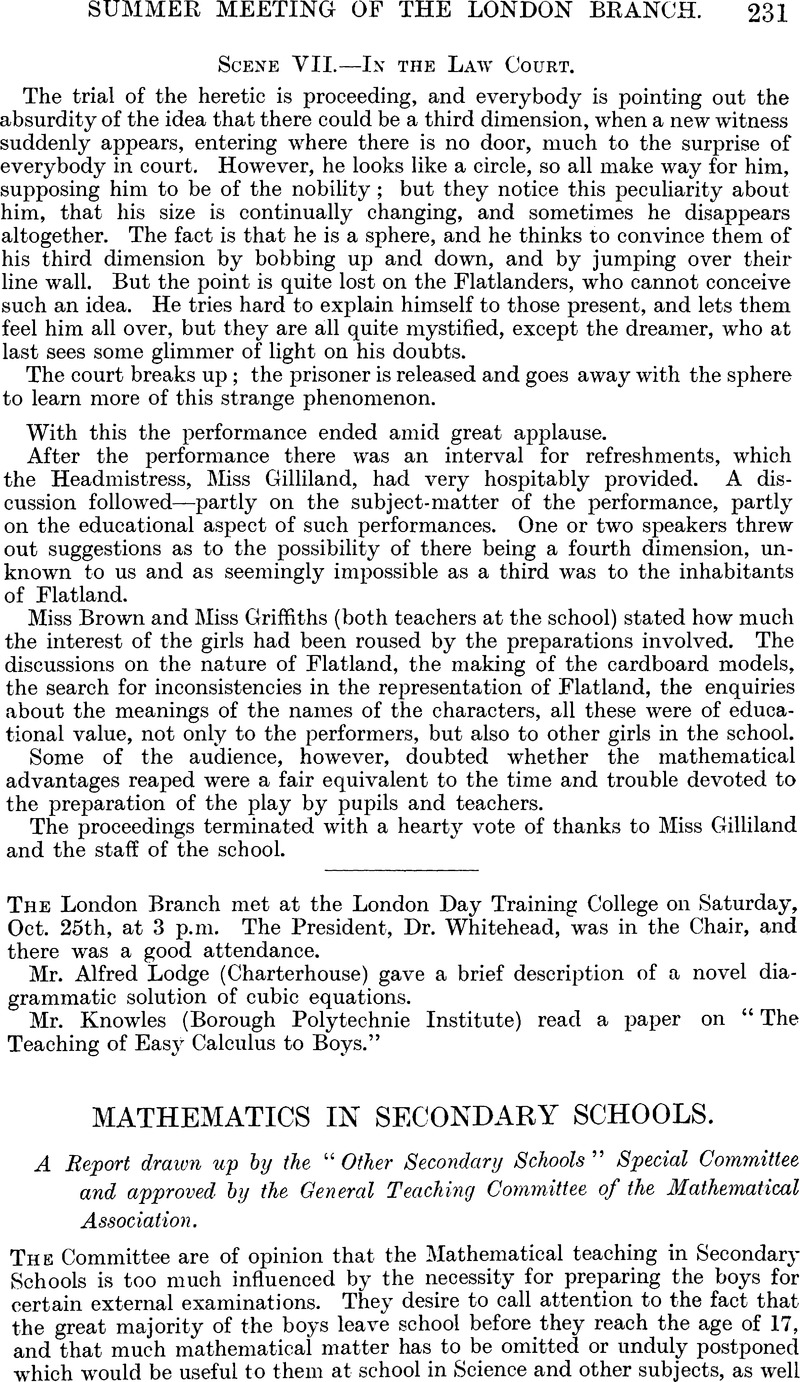No CrossRef data available.
Article contents
Mathematics in Secondary Schools
Published online by Cambridge University Press: 03 November 2016
Abstract

- Type
- Other
- Information
- Copyright
- Copyright © The Mathematical Association 1914
References
* The section reads as follows:
SOLID GEOMETRY.
The course should include some simple Solid Geometry, which might be introduced incidentally during the course of Plane Geometry. The main object of including this work is, that the power of thinking in space should be cultivated throughout. The following suggestions indicate soine of the ways in which this may be carried out:
(1) Riders on congruent triangles may sometimes deal with triangles not in the same plane.
(2) The theorem of Pythagoras may be applied to figures in three dimensions, e.g. to finding the height of a cone, of which the slant height and the radius of the base have Keen measured.
(3) In dealing with some of the properties of the circle, the corresponding properties of the sphere may be discussed.
(4) Some work may be done on the plan and elevation of simple objects. The purpose of this work is not so much to teach a boy how to draw a plan and elevation of a given solid as to enable him to visualise the solid whose plan and elevation are given.
(5) Problems in Elementary Trigonometry should involve observations in more than one plane.
(6) Examples may be given on the angle between two planes or between a line and a plane. The elementary solids provide material for such exercises.


